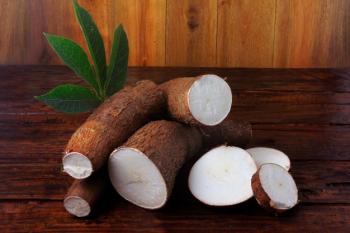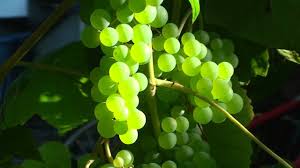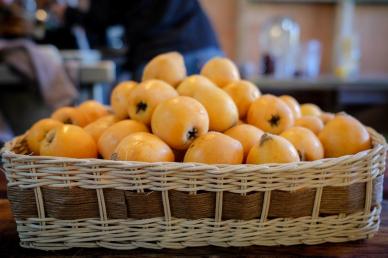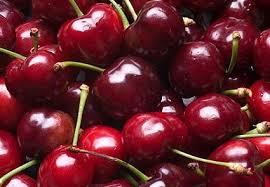Last time I wrote about root vegetables. This week I would like to present to you another guest to the list: the cassava.
Root vegetables are a welcome and wonderful guest during the winter season: delicious after a short roast in the oven, full of good and warm carbohydrates and pleases the stomach.
In addition to the more familiar root vegetables, there are also some more exotic ones – like the cassava, or the manioc, or the yuca. The cassava is the root of a perennial shrub that grows mainly in tropical and sub-tropical areas (most of the commercial growth is done today in Africa).
The shrub itself reaches a height of one to three meters, the leaves are similar in shape to those of the cannabis leaves, and its roots, like other root vegetables excel at storing starches.
Although the cassava is less familiar in Israel, in the tropics it is considered the third largest source of carbohydrates (after rice and corn).
The origin of the name of the cassava, or manioca in the language of the Indians, who once lived in the Brazil areas where it naturally grew, is related to a local legend.
Legend has it that the plant originated in the tears of the daughter of the tribe’s chief – who was sent to live in a secluded hut after conceiving a baby from an unknown father.
At the end of the mysterious pregnancy, the chief's daughter gave birth to a cute baby girl named Mani, but she died no less mysteriously when she reached her third year.
The mourning and weeping mother saw a shrub growing from the place where the girl was buried, with a pointed, white root, and called it “Mani's house” – Mani-Oka.
The meaning of the words“white ray” in their language is “manioc”. The name “cassava”stumbled through the languages of the natives of the Caribbean, who called bread baked from the manioca flour “cassava”.
From there the name was translated into Spanish, then into English and into Hebrew. If you want to call this plant by its elegant and proper name, then you will have to ask the storekeeper for the “manihotesculenta”.
The cassava was domesticated by man thousands of years ago as indicated by remnants from archeological sites in Central and South America.
In these areas the cassava was a major food source, during the period before the Spanish conquest. Cassava is especially suitable to be a basic dependable food source, as it is a strong surviving plant: it grows in very poor soil where other grains refuse to grow, and even in drought conditions.
One factor that the cassava will not live without, however, is the amount of available heat – less than eight hot months a year will significantly reduce the amount of crop, and any temperature below freezing may be fatal.
The cassava root, in addition to being very rich in starch (it is at the head of the list of crops that can provide the maximum amount of energy from food per day relative to the growing area it requires), contains large amounts of calcium, vitamin C and phosphorus.
The cooked root has a delicate flavor, and can substitute potatoes (both in flavor and in carbohydrate content) and also be a substitute for flour for those who aresensitive to gluten.
What else can we make from it? Steamed slices and deep-fried in oil can be a substitute for French fries; Make dumplings, soups and puree from it; Cassava flour is used to make tapioca (which is a very tasty and recommended dessert, especially now during the guava season, with a rich coconut creamsauce) and bread rolls (add milk, butter, eggs and cheese).
In its countries of origin, it is also customary to make a spicy sauce with tomatoes and chili, with the addition of cheese and dried corn; As a thickener in chicken and fish soups.
If you feel like tasting an organic cassava and creating your own culinary adventure – it has arrived in the store and will only stay with us for a short time (its season is about three weeks, and as mentioned, it does not like the winter).
Yours.
The Garden’s team
Forecast:
In the ORGANIC vegetable baskets we expect (draft only):
Cucumber
Tomato
Lettuce
Potato
Beet
Eggplant
Cohlrabi
Swiss Chard
Sweet potatoe
Parsley
The Large organic vegetable baskets also include:
Sweet potatoe
Spinach
Coriander
In the ORGANIC fruit baskets (NEW – Increased variety, price – 70 Shekels)
Oranges
Grapefruit
Banana
Water melon
Pomelo
The large ORGANIC fruit baskets also include: ( NEW – Increased variety, price -100 Shekels)
Leomon
Papaya
Sweetie
The ORGANIC Green Basket:
Swiis Chard
A kind of lettuce
Kale
Dill
Green onion
Sprouts
Spinach
NEW – The ORGANIC Basket for couples (price – 150 shekels):
Cucumber
Tomato
Lettuce
Potato
Eggplant
Carrot
Cohlrabi
Parsley
Swiss Chard
Beet
Sweet potatoe
Coriander
Pepper
Oranges
Red grapefruit
Sweetie











